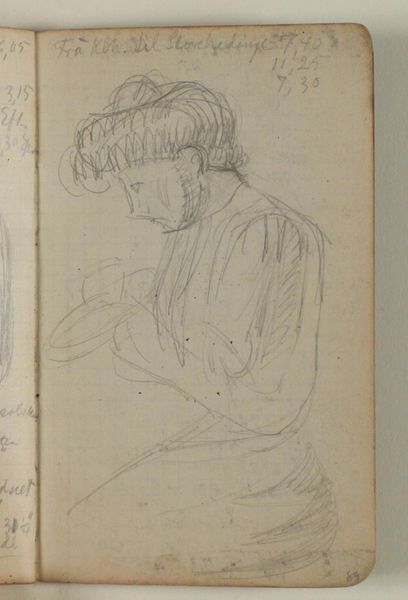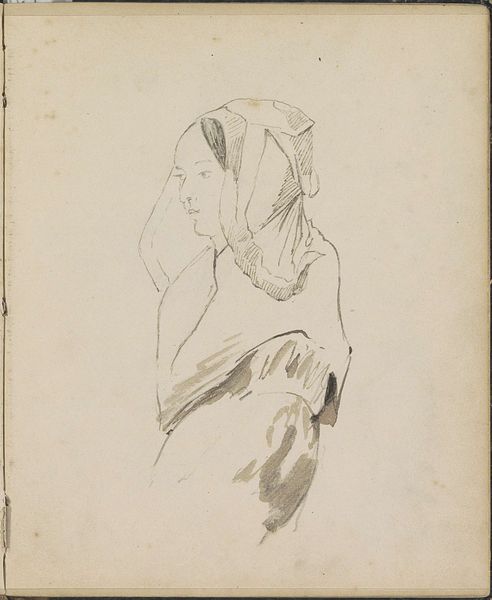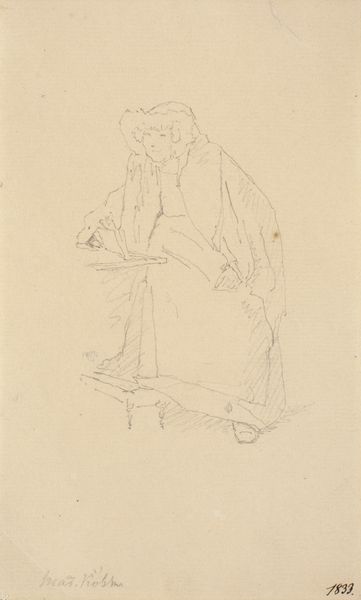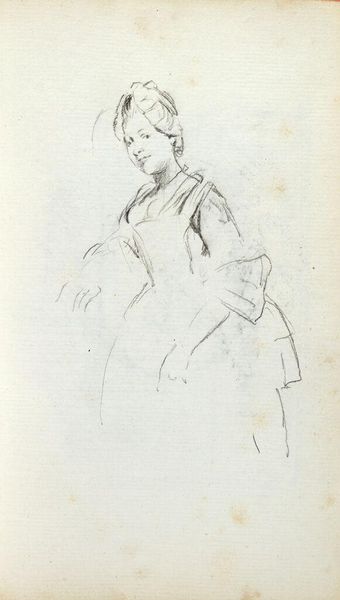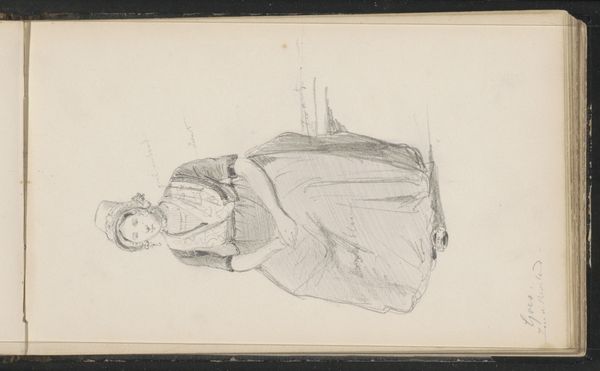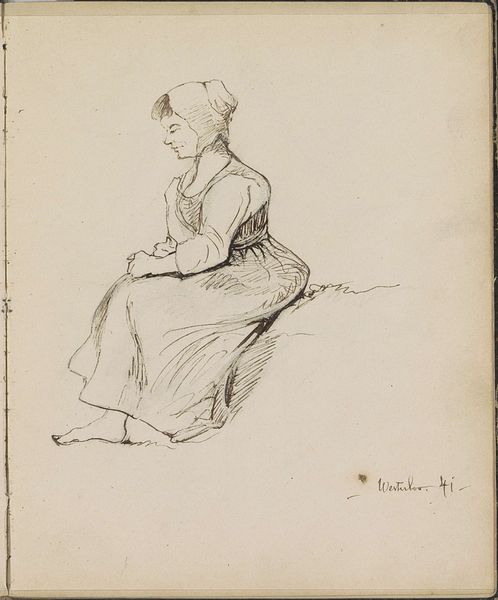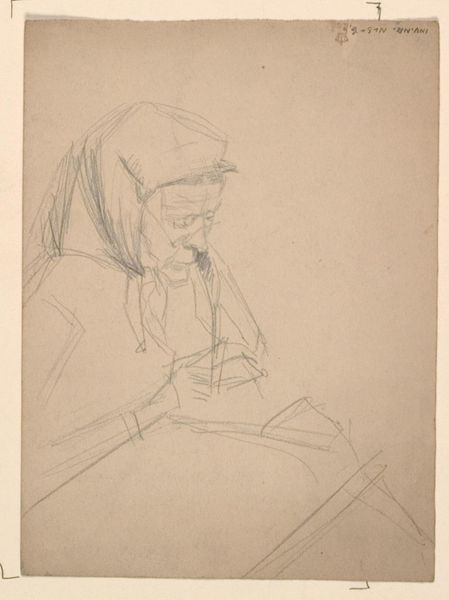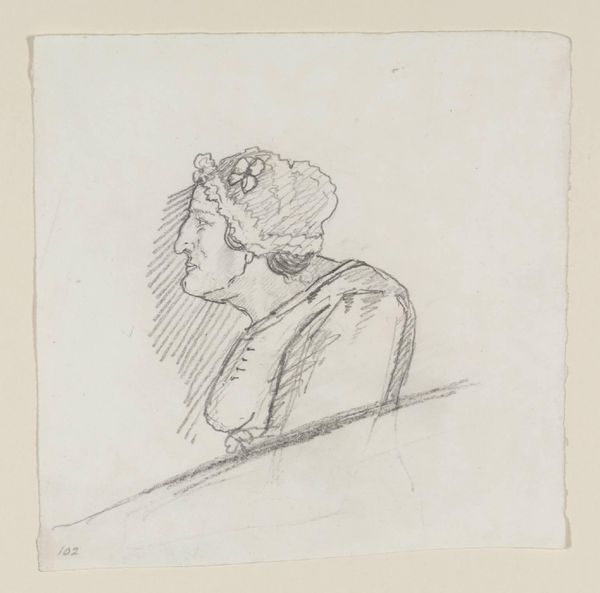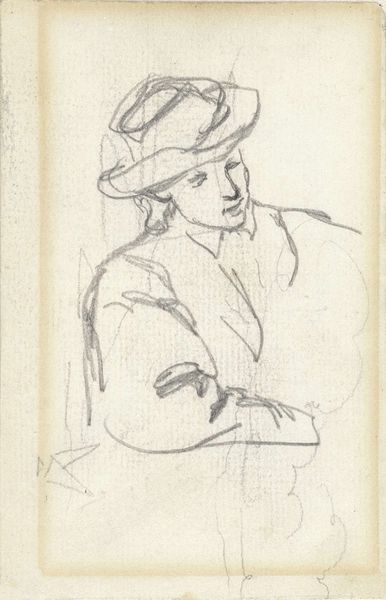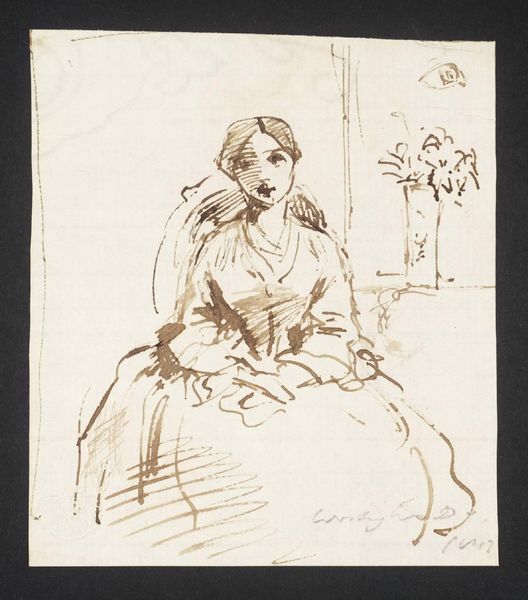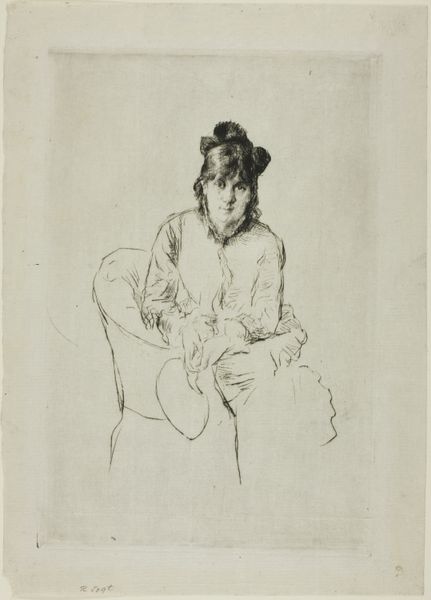
drawing, pencil
#
portrait
#
drawing
#
pencil sketch
#
figuration
#
pencil
#
genre-painting
Copyright: Rijks Museum: Open Domain
Curator: This is "Meisje met een kap," or "Girl with a Cap," a pencil drawing by Jan Willem van Borselen, likely created sometime in the late 1860s or 1870s. It's currently held in the Rijksmuseum. Editor: My immediate response is a sense of quiet intimacy. The delicate pencil lines create a very hushed atmosphere, almost like peering into a private moment of reflection. The limited tonal range reinforces that feeling of contemplation. Curator: The subtle gradations of tone certainly lend the work a dreamlike quality. Observe the economical use of line to suggest form, particularly the way the artist captures the fall of light on the girl's cap and the soft curve of her shoulders. It speaks to a strong understanding of chiaroscuro, despite the drawing's simplicity. Editor: Yes, and considering the era, the cap itself is quite telling. It likely signifies a specific social or regional identity, possibly denoting her marital status or place within the rural Dutch community. Her downcast gaze—is it shyness, fatigue, or resignation? It invites us to speculate on the realities of women's lives in that period. Curator: From a formal standpoint, consider the placement of the figure within the composition. The deliberate cropping lends a sense of immediacy, almost as if we've caught a fleeting glimpse. There’s also the textured paper, visible beneath the drawing. It adds to the artwork’s tactile presence and authenticity. Editor: That immediacy is key. It bypasses idealized portrayals often found in academic painting of the time, giving us a glimpse, perhaps, of working-class life unvarnished. Her lack of adornment and the simple clothing are powerful visual cues in contrast to other works displayed nearby, revealing a lot about social status. Curator: The seeming spontaneity of the pencil lines can, I suggest, still offer a deeper visual architecture through which we can examine not simply *what* is represented but also *how* it is represented. We must analyze the lines, forms, tones for what they are and what visual affect they may have regardless of their overt denotation. Editor: It is in recognizing the 'how' and using historical analysis of context, of class, of gender, that a deeper sense of representation can begin to appear within this intimate portrait and we move toward understanding how, here, art intersects so vividly with everyday experience and even political meaning.
Comments
No comments
Be the first to comment and join the conversation on the ultimate creative platform.
